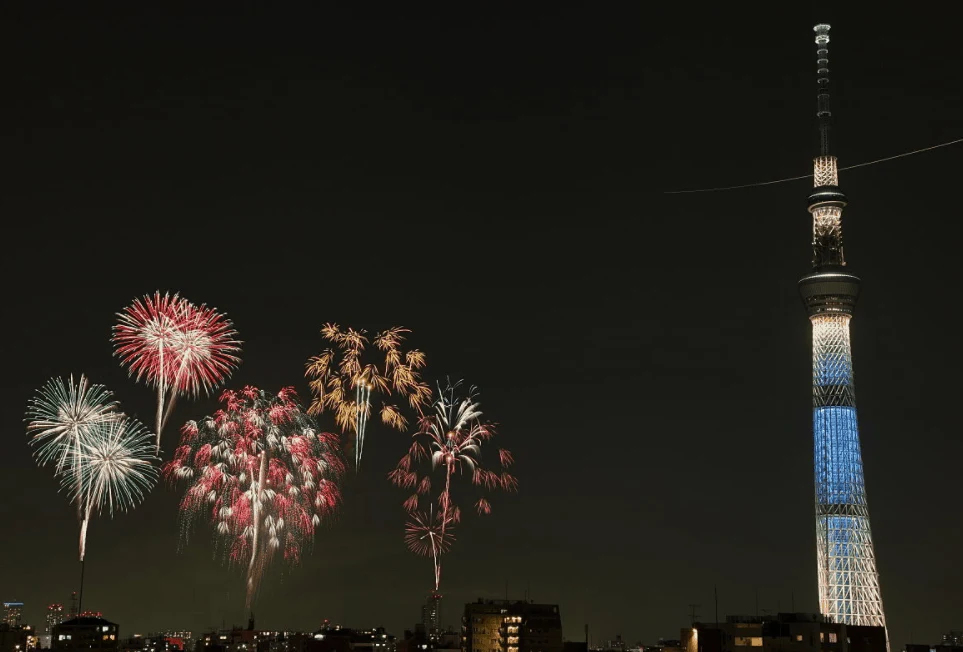Did you know that the most famous tower in Japan has been replaced by an even more impressive one in 2012?
In this post, you’ll discover the ultimate list of Tokyo Skytree facts, one of the most amazing buildings in Tokyo!
1. The Tokyo Skytree isn’t the Tokyo Tower
Even though the Tokyo Skytree can now be considered the most famous tower in Tokyo and all of Japan, it isn’t to be confused with its older brother, the Tokyo Tower.
The Tokyo Tower is basically a replica of the famous Eiffel Tower in Paris and was completed 54 years before the Tokyo Skytree was in 1958. It has been a prominent landmark in the city because of its distinctive color, the international orange that was used to comply with air safety regulations in the 1950s.
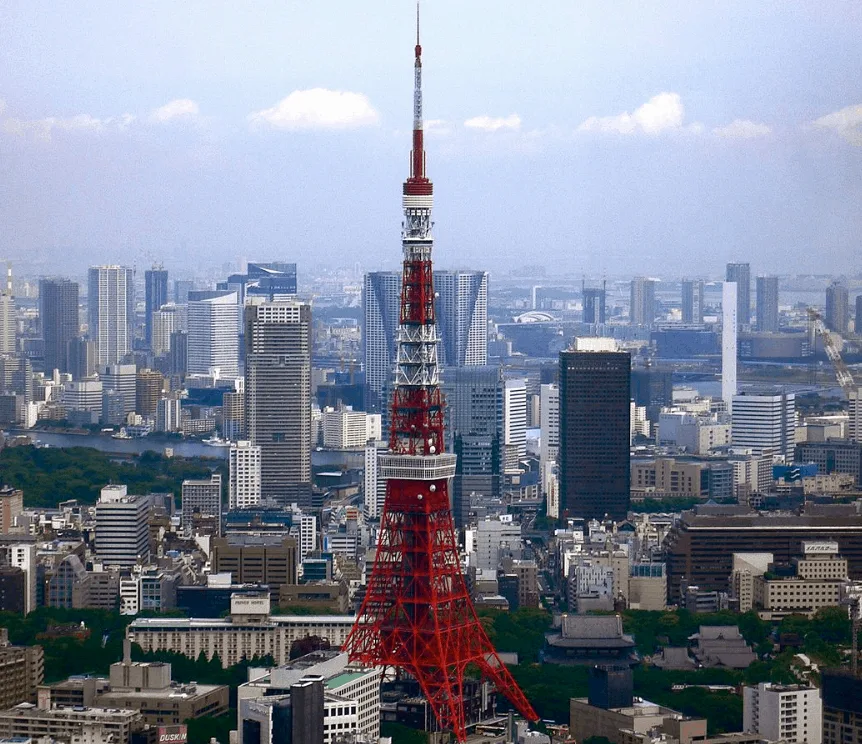
2. It’s located in the Sumida area in Tokyo
Greater Tokyo is the largest metropolitan area of any city in the world. It’s an enormous concrete jungle with hundreds of skyscrapers and the Tokyo Metropolis has a total population of over 37 million inhabitants.
This makes it all the more impressive that the Tokyo Skytree really sticks out as the most prominent landmark in this enormous city.
The tower is located in Sumida City, a special district in the city located just northeast of the historical city center of Tokyo.
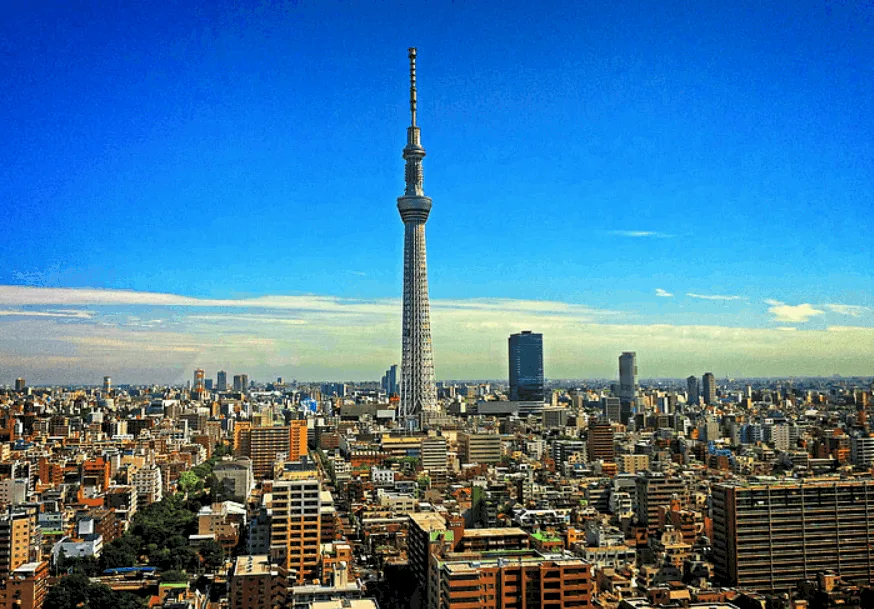
3. It’s the tallest tower in the world
The Tokyo Skytree has a total height of 634 meters (2,080 feet) when measured to the top of the antenna. This makes it the tallest tower in the world as it surpassed the Canton Tower in Guangzhou which stands 604 meters (1,982 feet) tall.
It’s also the second-tallest structure in the world at the moment. Only the Burj Khalifa is a taller skyscraper with a height of 829.8 meters (2,722 feet).
Both these structures might in the future be surpassed by the Jeddah Tower (over 1 kilometer in height) and the Sky Mile Tower (over 1 mile in height), which will also be located in Tokyo.
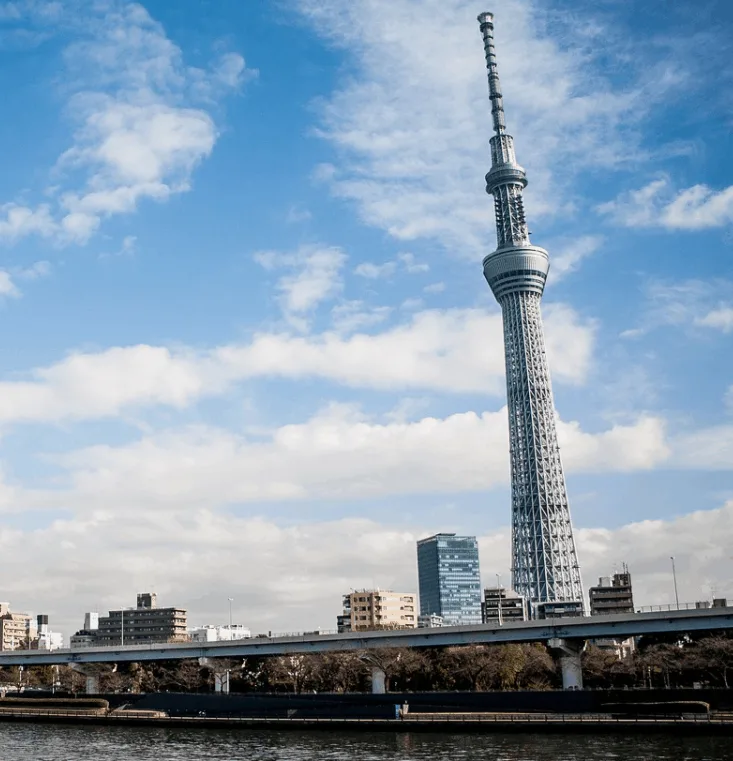
4. It provides a radio and television signal for the entire region
One of the most interesting Tokyo Skytree facts is that it’s almost double the height of the much older Tokyo Tower which stands just 333 meters (1,093 feet) tall, which is 9 meters taller than the Eiffel Tower!
There’s a good reason for it.
Apparently, they didn’t consider the fact that Tokyo would be booming the way it did in the 1950s as they built it way too short to be effective as a radio and television broadcasting tower. Because of all the skyscrapers that have been built around it, it’s not possible to offer coverage for the entire region anymore.
That’s exactly why the Tokyo Skytree was built and more importantly, why it was built with such an enormous height!
The Tokyo Skytree has become the main television and radio broadcast tower for the entire Kantō region, which doesn’t just include the Tokyo Metropolis, but also all the regions surrounding it.

5. The tower was completed on a Leap Day
The construction of the Tokyo Skytree started on July 14, 2008, and took less than 4 years to complete. One of the remarkable facts about the construction is that the tower was completed on Leap Day, February 29, 2012.
The tower had topped out nearly a year earlier on March 18, 2011, and was finally opened to the public on May 22, 2012.
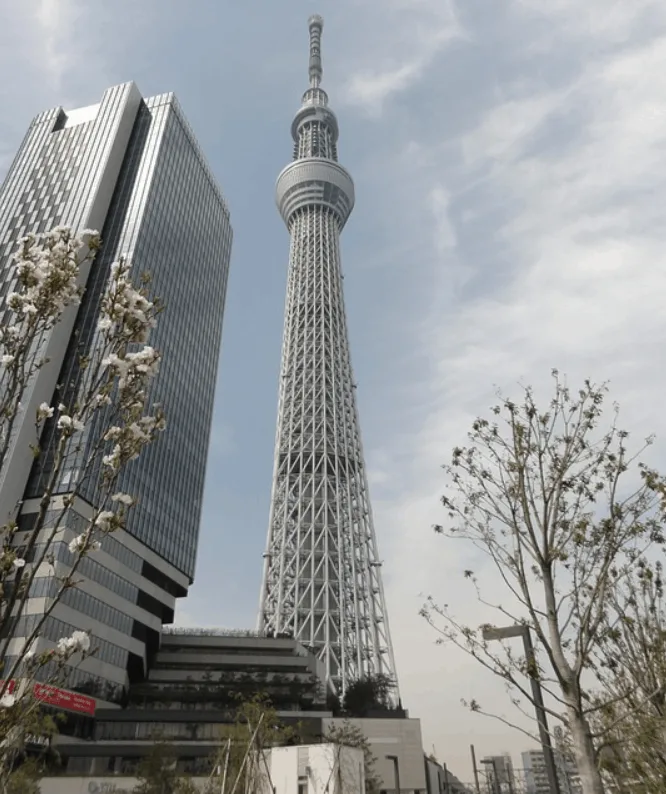
6. It was designed to resemble a historical Japanese building
The design of the Tokyo Skytree is supposed to be a combination of a neo-futuristic architectural style blended with a traditional Japanese style.
The Japanese style has a similarity to the one used in Tapei 101 in Taipei, Taiwan, as it resembles a 5-story pagoda, a popular historical structure in Japan and multiple other Asian countries.
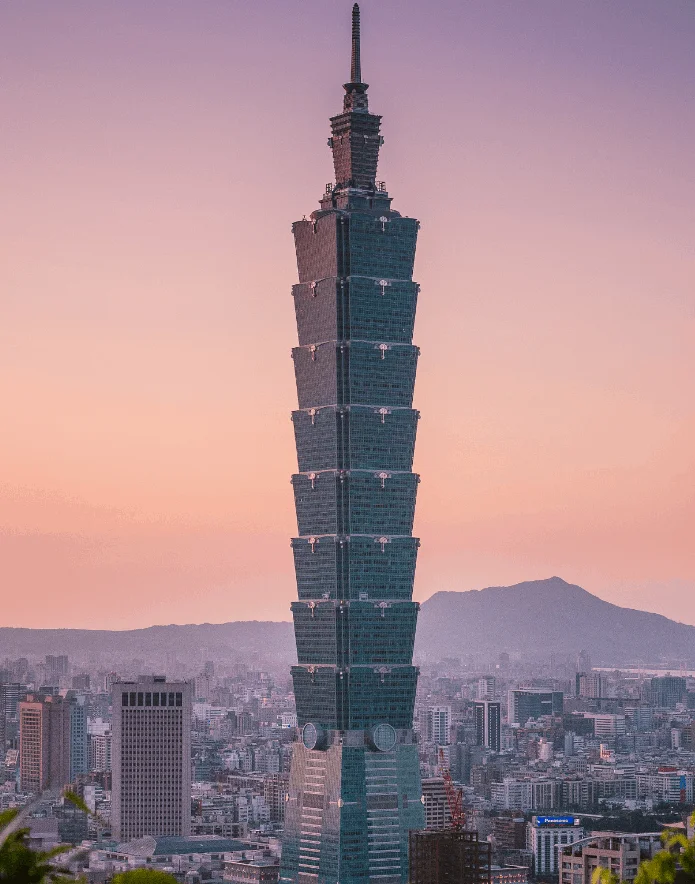
7. There are two observation decks in the Tokyo Skytree
Apart from serving its purpose as a broadcasting tower, the Tokyo Skytree is also a very popular tourist attraction. The tower has a total of 2 observation decks that provide amazing views over the city.
The first deck is located at a height of 350 meters (1,150 feet) and is massive as it has a capacity of up to 2,000 people. The highest observation deck is located 100 meters higher at a height of 450 meters (1,480 feet) and offers space for up to 900 people.
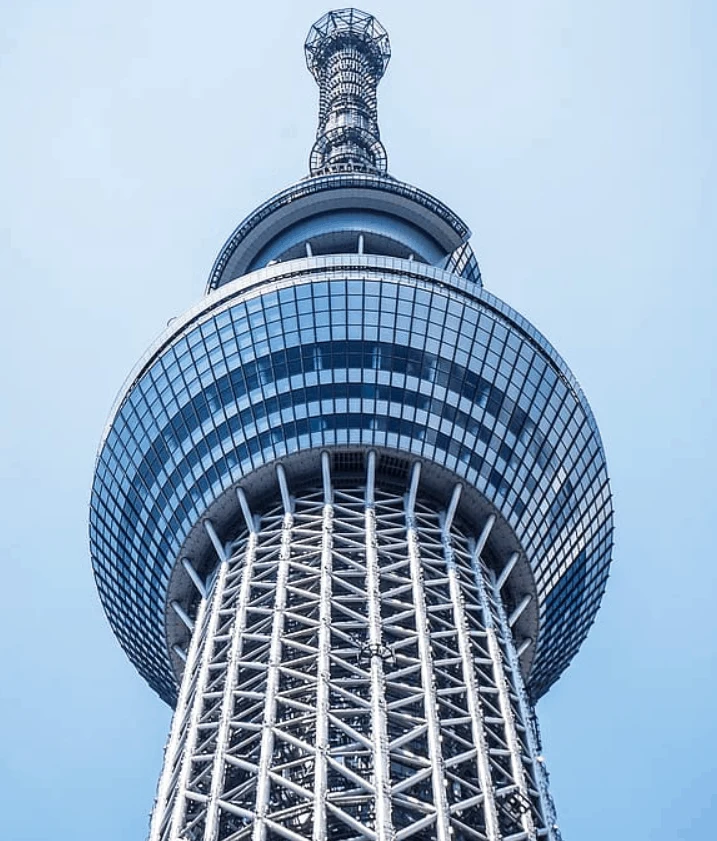
8. The views from the top deck are absolutely stunning
To reach the top observation deck, visitors have to walk through a glass skywalk that spirals all the way to the top. Here you can get some of the most amazing views of Tokyo imaginable!
Another amazing feature of the observation deck is the glass walk which allows visitors to look directly down to the streets below. Not for the faint of heart, that’s for sure!
What an amazing place to relax as the sun goes down and the lights in the buildings below turn on!
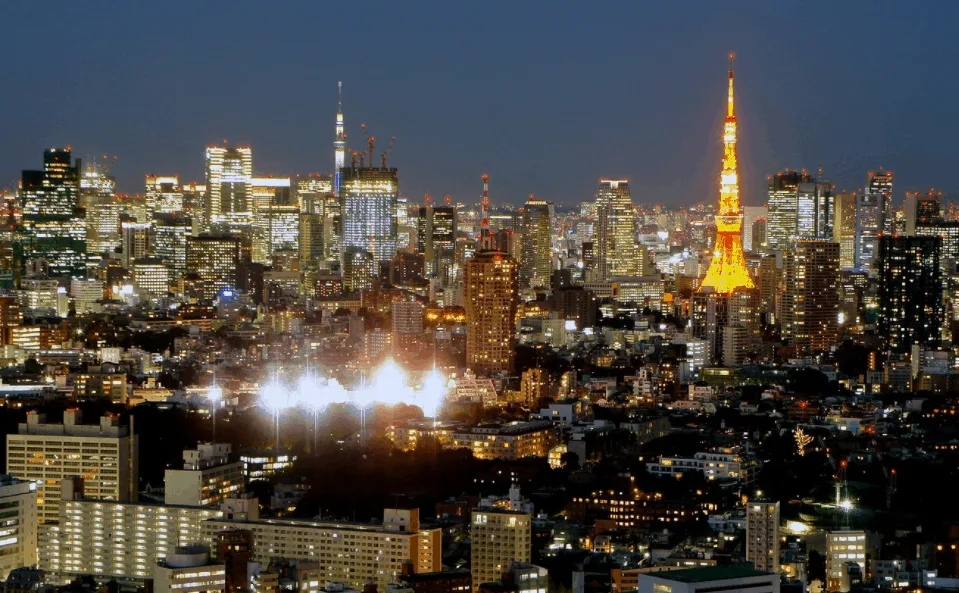
9. Tuned mass dampers ensure the tower is earthquake resistant
We don’t have to tell you that Tokyo is prone to earthquakes. Every single apartment building in Tokyo is equipped with an emergency package in case the big one hits, which is bound to happen one day.
Therefore, it was absolutely crucial to ensure the safety of the Tokyo Skytree was guaranteed and the building was made resistant to severe earthquakes.
To do make this happen, a central shaft of reinforced concrete was built which is connected to the outer layer of the building with oil dampers. These dampers will form a protective cushion for the building in case a massive earthquake rocks the city.
The engineers claim that these dampers could absorb up to 50 percent of the energy released by the earthquake and protect the building from severe damage.

10. The Tokyo Skytree was an instant success
On opening day, the tower was swarmed with visitors who wanted to take a ride to the top of the tower. and who can blame them, right? The sights you get from the top observation deck are simply magnificent!
The first two months were fully booked and people were waiting in line for over a week to ensure they got a ticket. Crazy stuff, as it’s estimated that 1.6 million people took a ride to the top of the Skytree in its first week!
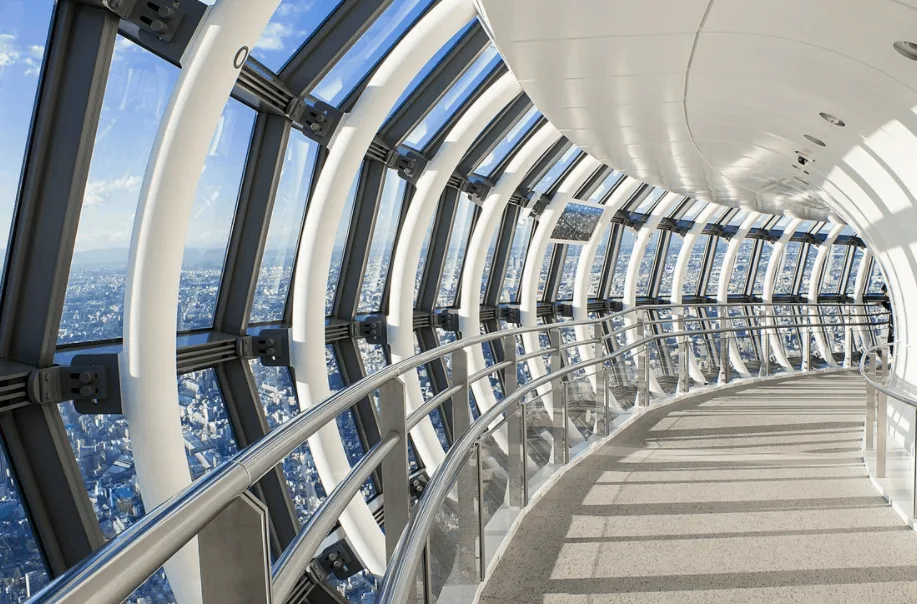
11. The Tokyo Skytree is painted in an original color
another one of those fascinating Tokyo Skytree facts is that it was painted in its very own color called “Skytree White.” It’s not completely white as it has a very light blue shine to it.
This color resembles a traditional Japanese color called “aijiro” which has been used extensively in various forms of Japanese art.
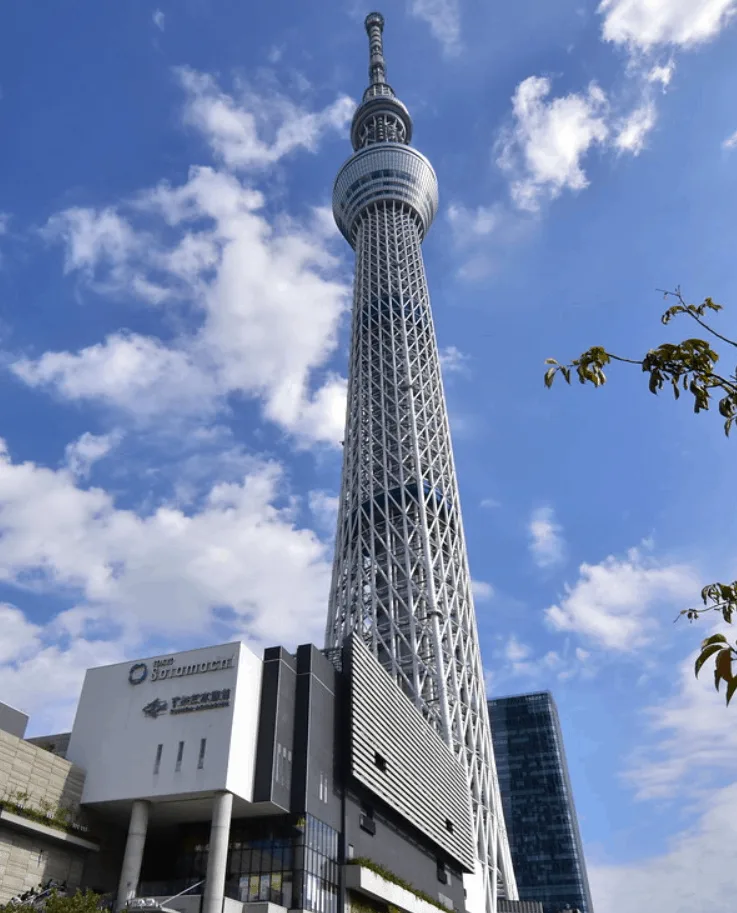
12. The tower has two sets of illumination
The name of the Tokyo Skytree was chosen from a list of 6 possible candidates with a nationwide vote. Out of the 110,000 votes cast, the Skytree name received about 30% of the votes.
The height of the tower is also no coincidence as the 634 meters stand for 6 (mu), 3 (sa), 4 (shi), which results in “Musashi” and is the old name of the location the Skytree was built on.
The Skytree can be illuminated with 2 patterns:
- Iki (chic, stylish) sky blue.
- Miyabi (elegance, refinement) purple.
Every day the color scheme switches from one color to the other!
